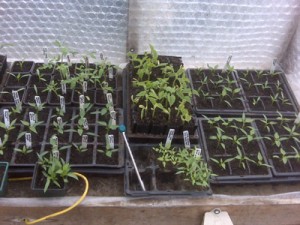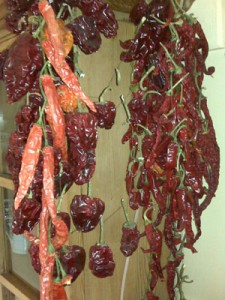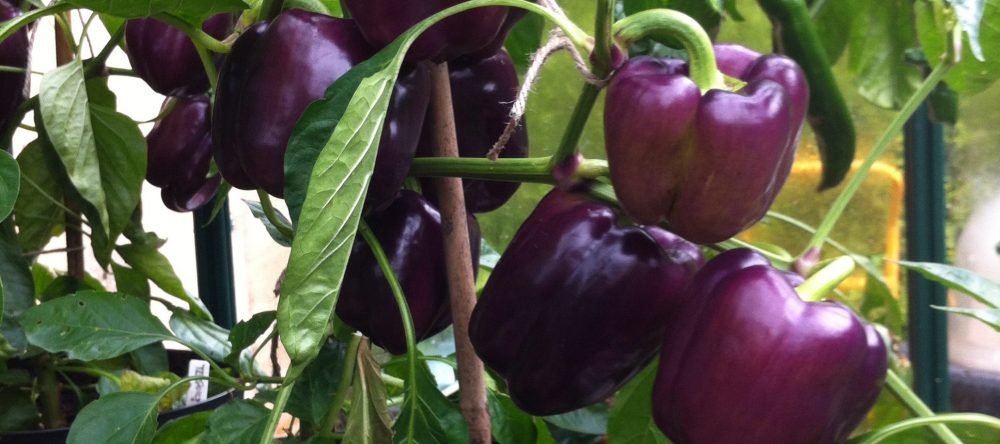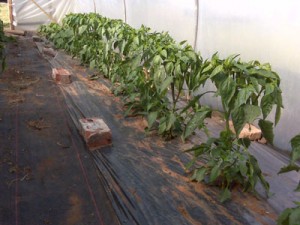Sowing pepper and chili seeds
One can grow capsicums – chillies and peppers – much in the same way as tomatoes. Seed can take anything up to four weeks to germinate and plants need a long growing season to give of their best. They need warmth to get going, ideally a soil temperature of 20 to 24 degrees centigrade – 70 to 77 degrees Fahrenheit. I start seeds off in pots in my greenhouse propagator around the third week of January using a mix of three parts John Innes seed compost with one part standard potting compost, although a warm kitchen shelf or window-sill will do. When the first pair of true leaves are fully developed, transplant the seedlings into individual 3” (8cm) pots using a fifty -fifty mix of John Innes No: one compost mixed with a regular peat-free potting compost. Carefully tease the seedlings out of their pots holding onto the leaves, not the stem and transplant up to the leaf joint.
When the first pair of true leaves are fully developed, transplant the seedlings into individual 3” (8cm) pots using a fifty -fifty mix of John Innes No: one compost mixed with a regular peat-free potting compost. Carefully tease the seedlings out of their pots holding onto the leaves, not the stem and transplant up to the leaf joint.
Capsicums hate shock so they should always be irrigated using tepid water. Once the plants are growing on strongly and have four sets of leaves one can pinch out the growing tip to encourage a more bushy habit. By the middle of April the plants should be ready for potting up into their final home. I use ten-inch (25cm) pots filled with a good quality potting compost like New Horizon mixed equally with John Innes no: 3 potting compost. I also plant directly into the greenhouse border, leaving about 60cms (2 feet) between plants.
Capsicums need light and warmth. Some varieties grow well outside in a sunny, sheltered spot from late May. Personally I only grow capsicums under glass or in my polytunnels.
Once the first flowers set fruit start feeding with a liquid tomato fertiliser once a week. Depending on the variety you should be harvesting your first green peppers and chillies by late July and ripe one in August. If you can keep the plants warm they will grow through to the end of the year.
Capsicums can be kept in a variety of ways. Chillies can be frozen whole, dried by stringing lines with cotton thread and leaving them to hang in a warm place. Some varieties are bred to be dried and ground to make chilli powder or paprika.


